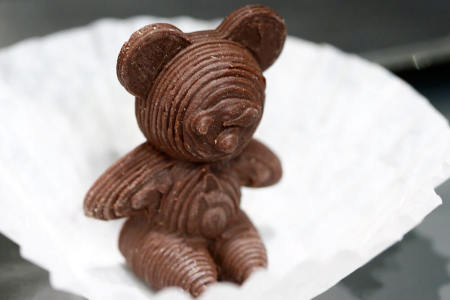Futuristic Food: 3D Print Your Pizza, Spaghetti Sauce and Gaucamole

Descriptions of food typically include the use of adjectives such as delicious, mouth-watering, scrumptious, delectable, flavorful, appetizing, succulent and (for those over-the-top indulgent desserts) decadent. But Natural Machines and 3D Systems, makers of 3D food printers Foodini and ChefJet, would like consumers to add inventive and futuristic to the list.
A food printer?
The growing number of devices for 3D food printing has the potential to completely alter the way in which consumers view food and food preparation. But the Foodini and its brethren aren't the same as the 3D printers being used in the automotive and aerospace industries. Those printers generally run at one speed and print plastic. The Foodini is programmed similarly, but it works with numerous ingredients and prints edible creations. Instead of ink cartridges, 3D food printers utilize food capsules. There are a surprising number of 3D food printers currently on the market or poised to enter the market. Some of these include the Choc Creator from Choc Edge, the Discovery Extruder from Structur3D, the 3D Fruit Printer from Dovetailed, and the Original Food Printer from Fab@Home.
Ease of use





















